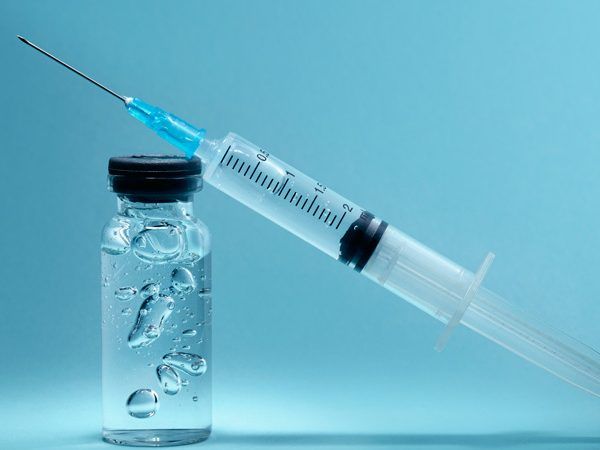
What is Toradol Injection?
Toradol injection, generically known as ketorolac tromethamine, is a nonsteroidal anti-inflammatory drug (NSAID) that is commonly used for the short-term management of moderate to severe pain. It is typically administered intramuscularly (IM) or intravenously (IV) and is especially effective in cases where oral pain relievers are insufficient or inappropriate. This injectable medication is often utilized in postoperative settings, orthopedic injuries, and acute musculoskeletal pain scenarios.
Pharmacology and Mechanism of Action
Toradol injection works by inhibiting the cyclooxygenase (COX) enzymes, specifically COX-1 and COX-2. These enzymes play a pivotal role in the production of prostaglandins, which are lipid compounds involved in inflammation, fever, and pain signaling. By blocking prostaglandin synthesis, Toradol reduces inflammation, alleviates pain, and brings down fever without causing sedation or addiction, unlike opioids.
Medical Uses and Indications for Toradol Injection
1. Postoperative Pain Management
One of the most common applications of Toradol injection is in the post-surgical setting, where it provides potent analgesia without the respiratory depression or dependency risks associated with opioids.
2. Acute Musculoskeletal Injuries
In emergency departments, Toradol is frequently administered to patients with sprains, strains, or trauma-related injuries. Its rapid onset and short half-life make it ideal for acute pain episodes.
3. Renal Colic and Urological Pain
Due to its anti-inflammatory and antispasmodic properties, Toradol injection is highly effective in relieving pain associated with kidney stones and urinary tract spasms.
4. Migraine and Headache Relief
In certain cases, Toradol injections are used as part of a migraine protocol, offering quick relief for refractory headaches when other medications fail.
5. Off-Label Uses
Although not FDA-approved for all types of pain, clinicians may use Toradol injection off-label for cancer pain, dental pain, and lower back pain, especially when other NSAIDs are ineffective.
Dosage Guidelines and Administration
The recommended dosage of Toradol injection varies based on patient weight, age, renal function, and severity of pain. Standard dosing parameters include:
-
IM injection for adults: 60 mg as a single dose or 30 mg every 6 hours, not exceeding 120 mg per day.
-
IV administration: 30 mg as a single dose or 30 mg every 6 hours, with a maximum daily dose of 120 mg.
-
Elderly or renal-impaired patients: 15 mg every 6 hours, not to exceed 60 mg in 24 hours.
-
Duration of use: Should not exceed 5 consecutive days, due to the risk of renal toxicity and gastrointestinal complications.
Administration should always be performed by a qualified healthcare provider in a clinical setting, ensuring aseptic technique and accurate dosing.
Side Effects and Warnings Associated with Toradol Injection
While Toradol injection is effective, it is not without risks. Common and serious side effects include:
Common Side Effects
-
Nausea
-
Dizziness
-
Headache
-
Injection site pain
-
Diarrhea or constipation
Serious Side Effects
-
Gastrointestinal bleeding or ulceration
-
Kidney dysfunction or failure
-
Elevated liver enzymes
-
Hypertension
-
Anaphylaxis and severe allergic reactions
Patients over 65, those with renal impairment, or those on concomitant NSAIDs are at greater risk of adverse effects.
Contraindications and Precautions
Toradol injection should not be used in:
-
Patients with peptic ulcers or GI bleeding
-
Individuals with advanced renal disease
-
Those who are hypersensitive to NSAIDs
-
Patients at risk for cardiovascular events
-
During labor and delivery, due to risk of uterine contraction inhibition
-
Before or after major surgery with high bleeding risk
Careful assessment is crucial, and Toradol should never be combined with other NSAIDs or anticoagulants, due to compounded bleeding risks.
Interactions with Other Medications
Toradol injection can interact with a variety of drugs, leading to reduced efficacy or increased toxicity:
-
Anticoagulants (e.g., warfarin): Increased risk of bleeding
-
SSRIs and SNRIs: Enhanced risk of gastrointestinal bleeding
-
ACE inhibitors and diuretics: Potential for nephrotoxicity
-
Lithium: Risk of lithium toxicity due to decreased renal clearance
-
Methotrexate: May increase toxicity by reducing excretion
Before initiating Toradol injection, it is essential to review all current medications and assess for potential interactions.
Comparison with Other Pain Management Options
Toradol vs. Opioids
-
Toradol provides non-sedating, non-addictive pain relief
-
Unlike opioids, it does not cause respiratory depression
-
Opioids may be more appropriate for chronic or severe pain not responsive to NSAIDs
Toradol vs. Oral NSAIDs
-
Faster onset due to parenteral administration
-
Suitable for patients who cannot take oral medications
-
Short duration limits long-term use
Monitoring and Patient Education
Patients receiving Toradol injection should be monitored for:
-
Renal function tests (BUN, creatinine)
-
Liver function (ALT, AST)
-
Signs of bleeding (black tarry stools, hematemesis)
-
Blood pressure readings
Patient education should emphasize:
-
Strict adherence to dosing limits
-
Avoidance of alcohol, which can irritate the GI lining
-
Reporting of any side effects, especially those related to the gastrointestinal tract or kidneys
Storage and Handling
Toradol injection should be stored at controlled room temperature (20°C to 25°C / 68°F to 77°F), away from light and moisture. Vials and ampoules must be checked for discoloration or particulate matter before use. Once opened, it should be used immediately and not stored for later use.
Conclusion
Toradol injection offers a highly effective, non-opioid alternative for short-term pain management in clinical settings. Its rapid action, potency, and versatility make it a vital tool for managing acute pain, provided it is used within the defined clinical guidelines and safety parameters. Proper patient selection, close monitoring, and a thorough understanding of contraindications and drug interactions are essential to maximize its benefits while minimizing risks.